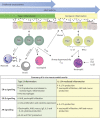Sex and gender in asthma
- PMID: 34789462
- PMCID: PMC8783601
- DOI: 10.1183/16000617.0067-2021
Sex and gender in asthma
Abstract
Asthma is a heterogenous disease, and its prevalence and severity are different in males versus females through various ages. As children, boys have an increased prevalence of asthma. As adults, women have an increased prevalence and severity of asthma. Sex hormones, genetic and epigenetic variations, social and environmental factors, and responses to asthma therapeutics are important factors in the sex differences observed in asthma incidence, prevalence and severity. For women, fluctuations in sex hormone levels during puberty, the menstrual cycle and pregnancy are associated with asthma pathogenesis. Further, sex differences in gene expression and epigenetic modifications and responses to environmental factors, including SARS-CoV-2 infections, are associated with differences in asthma incidence, prevalence and symptoms. We review the role of sex hormones, genetics and epigenetics, and their interactions with the environment in the clinical manifestations and therapeutic response of asthma.
Copyright ©The authors 2021.
Conflict of interest statement
Conflict of interest: N.U. Chowdhury reports support for the present manuscript from the National Institute of Health, who provided the following funding sources: T32GM007347. Conflict of interest: V.P. Guntur reports receiving support for attending meetings and/or travel from AstraZeneca and CASCADE Investigator meeting, outside the submitted work. Conflict of interest: D.C. Newcomb reports support for the present manuscript from National Institute of Health, who provided the following funding sources: HL122554, HL136664 and DK020593. Conflict of interest: M.E. Wechsler reports support for the present manuscript from the Jin Hua Foundation. Consulting fees were received outside the submitted work from AstraZeneca, Boehringer Ingelheim, Equillium, Genentech, GlaxoSmithKline, Novartis, Regeneron, RestorBio, Sanofi, Teva, Cohero Health and Pulmatrix.
Figures



Comment in
References
-
- GBD 2016 Disease and Injury Incidence and Prevalence Collaborators . Global, regional, and national incidence, prevalence, and years lived with disability for 328 diseases and injuries for 195 countries, 1990–2016: a systematic analysis for the Global Burden of Disease Study 2016. Lancet 2017; 390: 1211–1259. doi:10.1016/S0140-6736(17)32154-2 - DOI - PMC - PubMed
Publication types
MeSH terms
Substances
Grants and funding
LinkOut - more resources
Full Text Sources
Medical
Research Materials
Miscellaneous
